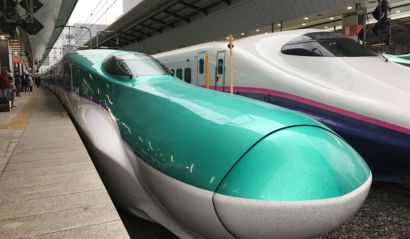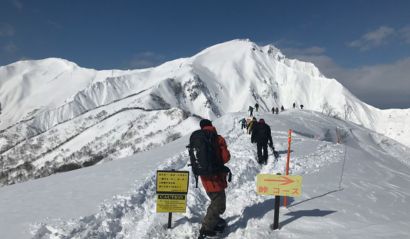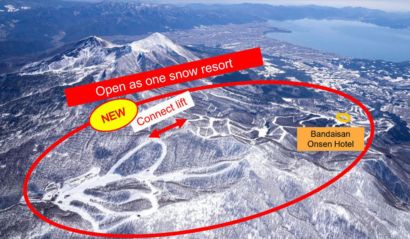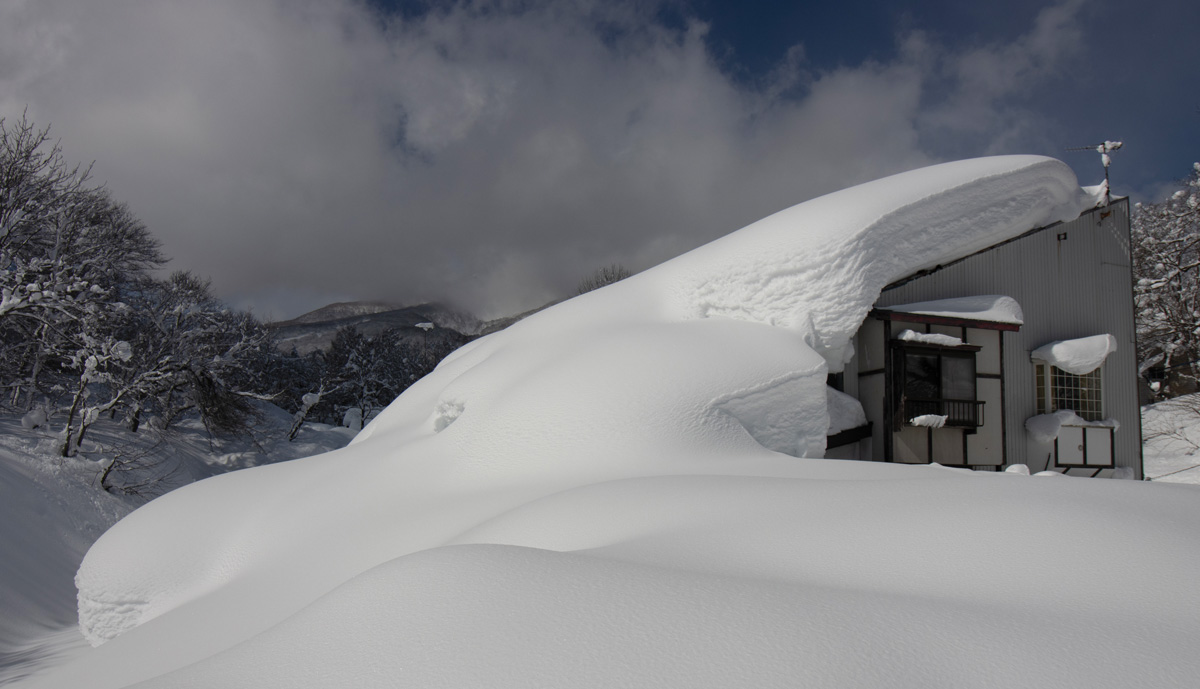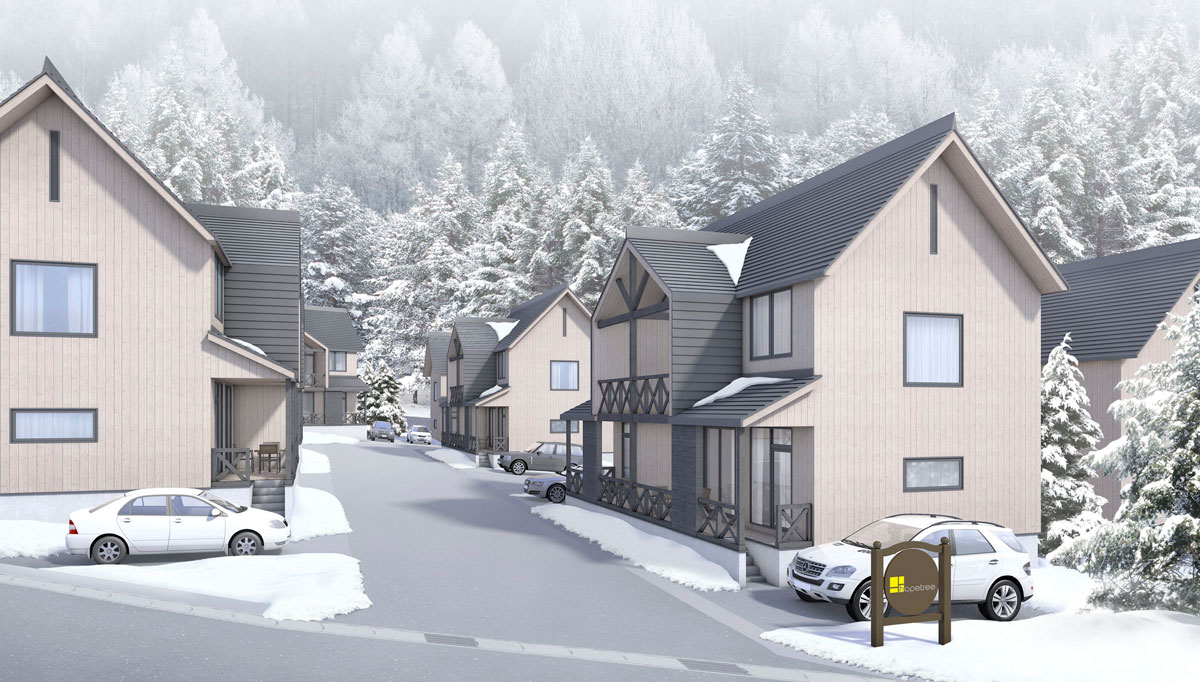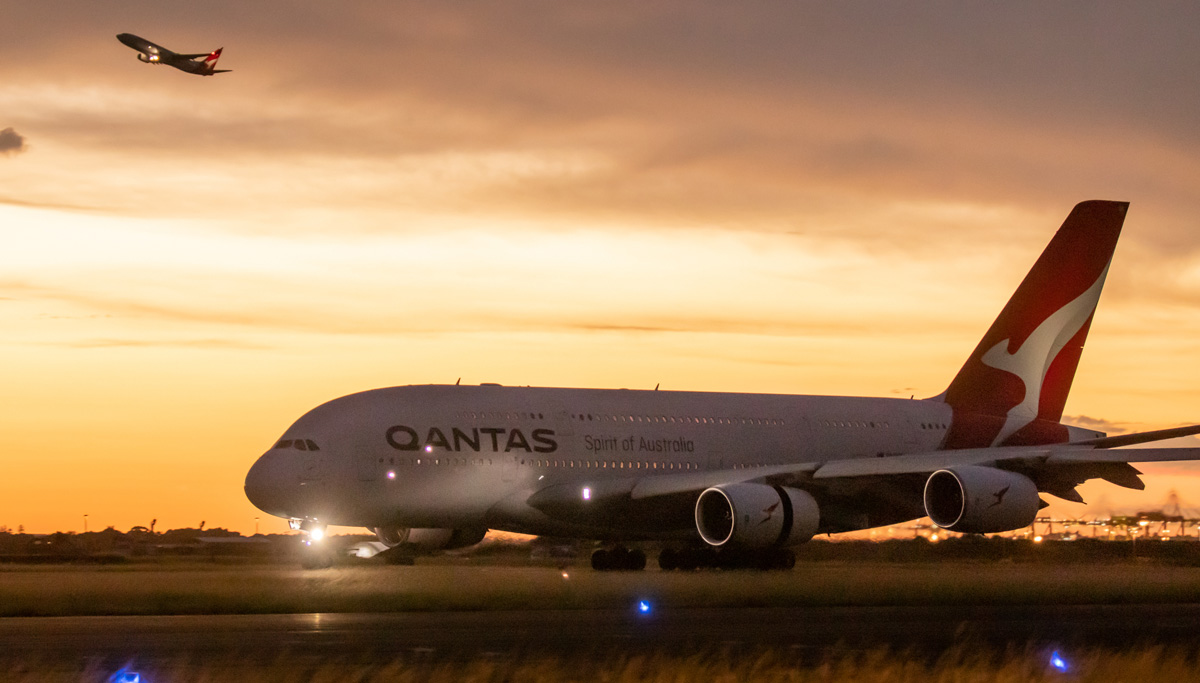Shonai Yamagata Winter Wonderland
Shonai Yamagata is a great place to take a break from skiing and boarding for a day or two and check out the spiritual side of Japan’s mountains. Yamagata Prefecture claims the most snowfall in Japan, so it has some amazing winter sights.
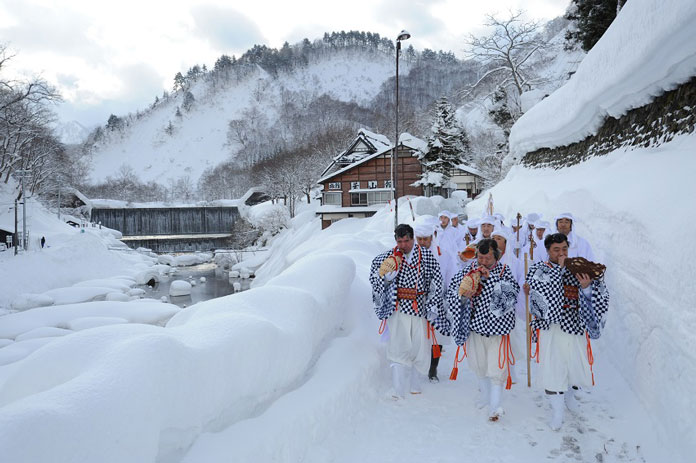
Yamagata gets more snowfall than anywhere in Japan!
Yamagata Prefecture is famous with skiers for mighty Zao Onsen, one of Honshu’s biggest and best resorts.
In Shonai lie the three sacred mountains of Yamagata, collectively known as the Dewa Sanzan. Sanzan just means “three mountains”, while “Dewa” is the original name of the area that subsequently became Yamagata Prefecture. It lies between Niigata to the south and Akita to the north.
For over 1,400 years the Dewa Sanzan has been of great spiritual significance to Shinto and Buddhist ascetics. The Shonai region is one of the main centers of Shugendo in Japan. Shugendo is a syncretic religion, combining aspects of Shinto, Buddhism, animism, and shamanism.
It’s especially focused on mountain asceticism. Yamabushi, or wandering ascetic hermits, forsake worldly possessions to find enlightenment and spiritual rebirth in the mountains. Shugendo beliefs hold that mountains are where departed souls and the gods reside, and that in order to get closer to them on a spiritual level, one must first train their body and deny it earthly pleasures.
The three peaks represent life/birth, death and rebirth, so for pilgrims completing the cycle of visiting all three is a must.
Towering above, the three mountains start with the lowest, Mount Haguro (414m), the gateway to the others and a magnificent site where visitors can experience Yamabushi mountain ascetic training on special tours with an English speaking Yamabushi as your guide.
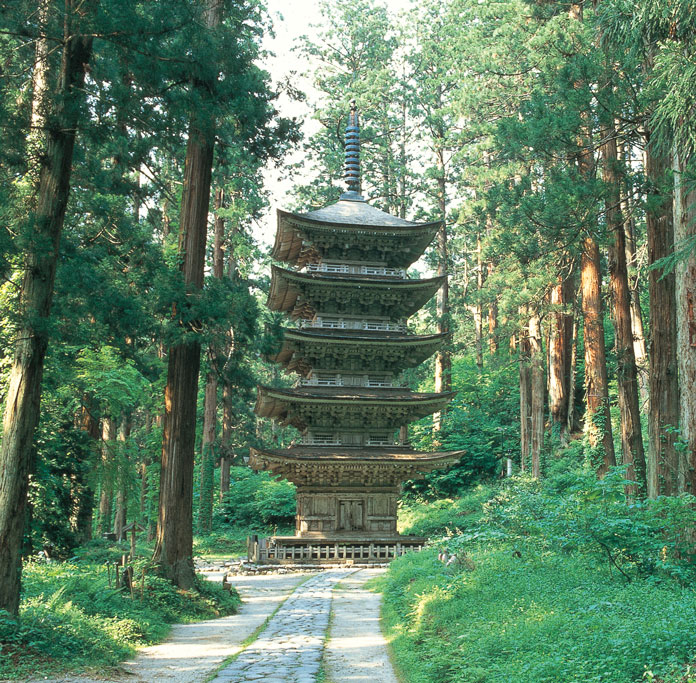
The 5 Storey Pagoda looks fantastic in any season
Mount Haguro features an historic 2,446 step stone stairway leading to the peak, which is claimed as the oldest in Japan. Along the path you wind up through magnificent old cedar trees that are classified as a Natural Monument of Japan.
In the forest you pass the Five-Storey Pagoda, which is kind of like a Japanese leaning tower of Pisa, except it’s not leaning – looking at it you think it should be, but the craftsmen who built it had amazing skills. It is recognised as an Important Cultural Asset of Japan. In winter with snow lying on the 5 roof levels it is even more beautiful.
Your knees will be feeling worse than a big day charging in powder, but all those steps are worth it to reach Gosaiden Temple at the summit. It features a 2.1 metre high timber roof and deep lacquered interior set in beautiful forest. Even the most frenzied device addicted city-dweller will feel some existential peace here.
A special 3 day/2 night Shonai Yamagata ‘Winter Wonderland & Hijiori Onsen Tour from Odyssey Japan is the easiest way to discover it. Their motto is “Let locals be your guide”, and it’s the perfect way to experience the traditions of walking the paths through the snow laden cedars to Mt Hagura, get up close to the spiritual Suga Waterfall, and see the magical Five Storied Pagoda coasted in white.
After the tour moves to Hijiori Onsen, where you can enjoy the hot spring bath and lunch in the nostalgic town. A delightfully scenic winter cruise down the Mogami river completes the day.
The package includes return ANA flights from Haneda to Shonei airport, 2 nights accommmodation in Tsuruoka, breakfasts and the full day of tours including snow walking boots and poles, onsen entry, lunch, a Zazen meditation experience and the river cruise. It can easily be done independently or as an add on to a more extensive skiing trip.
Departures from Y110,000 per person 2 share (minimum of 2 to run the tour so a couple can do it easily for example). Tours available Saturdays from 15 December 2018 through 26 January 2019. For more information check the OdysseyJapan English website here.
If it’s too late to get organized for this winter, there is always next year – lock it in when planning your ski tripin Japan– or other seasons. This region is fantastic any time of year, and Odyssey Japan have packages to suit the highlights of each season.
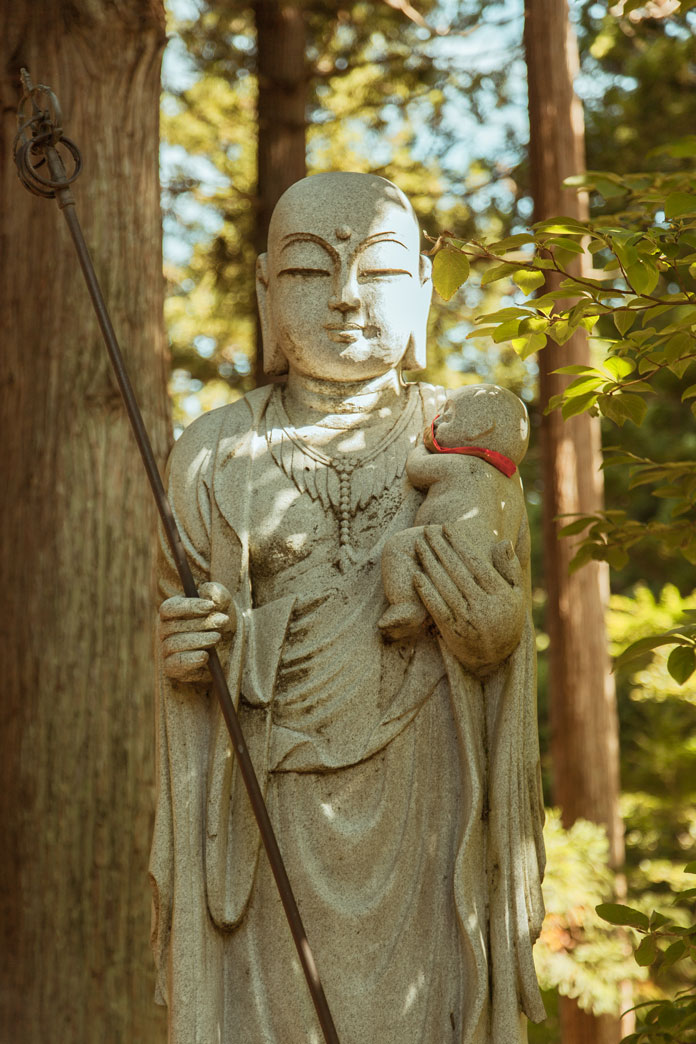
Surprising sights await along the paths
For example, in autumn you can feel even more by immersing yourself in the rituals of Yamabashi, mountain asceticism. Discover the ascetic’s rebirth experience, including walking through chill rivers then washing under a (very!) fresh waterfall on special Mount Yudono Spiritual Revival Tours available in September and October. Check the links here for details of those.
Mount Gassan at 1,984m is the highest of the three Dewa peaks, and home to a unique late season ski resort that usually runs from April to July! Yes, you can ski off the lifts in summer in Japan too. With just one double chair and a couple of drag lifts above that, it’s popular for hiking/skinning up to the cruisy corn snow bowls and for bumps ski training.
Mount Yudono, the third and most significant of all in the cycle as the peak associated with rebirth. It rates with Mt Ise in Mie Prefecture and Mt Kumano in Wakayama Prefecture as the most sacred mountains in all Japan.
The fertile, well watered valleys of Shonai were the ricebowl of old Edo in the Tokugawa Shoganate era. Great rice of course means great sake.
The Shonai Yamagata region has plenty of less spiritual, but fun, attractions as well. How many times do you go, “Only in Japan!” on a trip there?
Well here’s one for the books, Japan’s only jellyfish aquarium – Kamo Aquarium at Shonai in Yamagata Prefecture. It holds the Guinness Book of Record’s title for the largest collection of jellyfish on display.
Access is easy, Shonai Yamagata is just a one hour ANA flight from Tokyo.
Odyssey Japan have a range of tours year round to discover more – go here for details.

